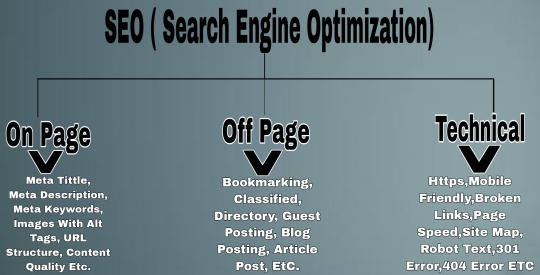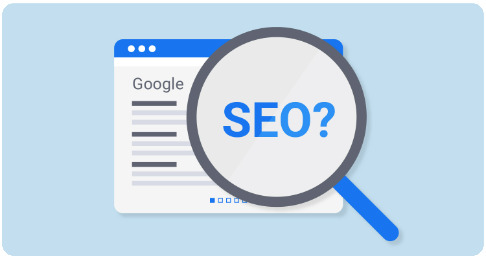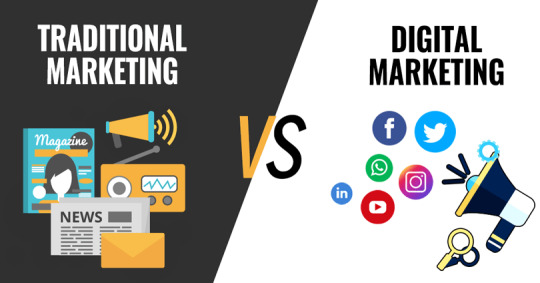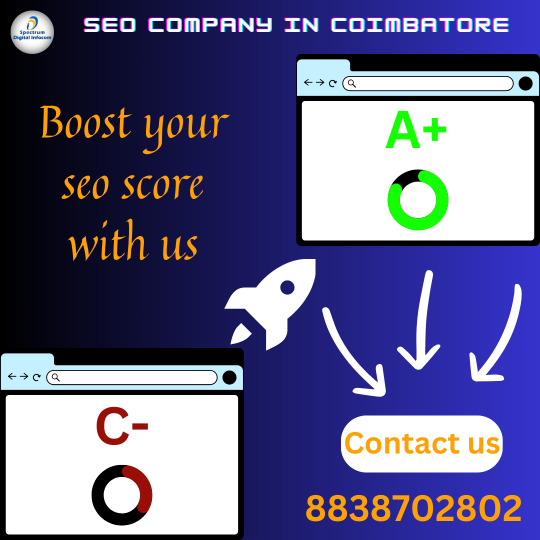#what is seo marketing
Explore tagged Tumblr posts
Text
#seo#seo tips#seo tools#seo course#what is seo#seo training#seo tutorial#seo explained#seo fundamental#seo in 5 minutes#seo fundamentals#simplilearn#what is seo marketing#seo in digital marketing#seo tutorial for beginners#search engine optimization#what is seo in digital marketing#what is seo and how does it work#search engine optimization course#seo off page optimization tutorial#the seo fundamental everyone gets wrong#simplilearn digital marketing
0 notes
Text
What is Search Engine Optimization?

Search engine optimization, often referred to as SEO (Search Engine Optimization), is a fundamental strategy in the world of digital marketing. It's the art and science of improving your website's visibility on search engines like Google, Bing, and Yahoo. When done effectively, SEO can help your website climb the search engine rankings, drive organic traffic, and boost your online presence. In this SEO-friendly blog post, we'll delve into the world of search optimization, its importance, and some actionable tips to enhance your website's performance.
Understanding Search Optimization
Search optimization revolves around optimizing various elements of your website to make it more appealing to search engines. These elements include:
Keyword Research:
Keywords are the foundation of SEO. They are the terms and expressions individuals use to look up information online. Research keywords thoroughly to identify the finest ones for your business. Tools like Google Keyword Planner and SEMrush can be immensely helpful.
On-Page Optimization:
Once you've identified your target keywords, strategically place them in key areas of your web pages, such as the title tag, meta description, headings, and content. Make sure your material is compelling, useful, and well-structured.
Quality Content:
High-quality, relevant content is crucial for SEO.
Create material that appeals to your target audience's desires and preferences. Regularly update your website with fresh and valuable content to keep both users and search engines engaged.
Mobile optimization:
Having a mobile-responsive website is crucial given the growing popularity of mobile devices. Google considers mobile-friendliness when ranking websites, so ensure your site looks and functions well on smartphones and tablets.
Site Speed:
Page speed is a ranking factor. Slow-loading websites frustrate users and can lead to higher bounce rates. Optimize your website's speed by compressing images, using browser caching, and minimizing code.
Backlinks:
Backlins are the links to promote your website from the other sites. Quality backlinks can significantly impact your SEO. Put your efforts on obtaining backlinks from trustworthy sources in your sector.
Technical SEO:
This involves optimizing technical aspects of your website, such as improving URL structure, creating an XML sitemap, and ensuring proper indexing by search engines.
User Experience (UX): To Make sure your site is user friendly and seo frienly, easy to use, and is mobile friendliness . Google considers user signals like click-through rates and time spent on site.
Local SEO:
If your business has a physical location, it is crucial to optimize for local search.Claim your Google My Business listing, gather online reviews, and optimize your site for local keywords.
Importance of Search Optimization
Now that we understand what search optimization involves, let's explore why it's so important for your online presence:
Increased Visibility:
SEO helps your website rank higher in search engine results pages (SERPs). When your site appears near the top for relevant keywords, it's more likely to be noticed by users.
Organic Traffic:
SEO is a sustainable way to drive organic (non-paid) traffic to your website. Unlike paid advertising, organic traffic doesn't require ongoing ad spend.
Credibility and Trust:
Websites that do well in search results are frequently thought of as being more trustworthy and reliable. Users tend to click on top-ranked pages, assuming they contain valuable information.
Cost-Effective:
While SEO may require an initial investment, it's generally more cost-effective in the long run compared to paid advertising campaigns.
Long-Term Results:
Unlike some marketing strategies that yield short-term results, SEO can provide ongoing benefits. Once you achieve high rankings, maintaining them becomes more manageable with consistent effort.
Competitive Advantage:
SEO allows you to stay competitive in your industry. You run the danger of slipping behind if your rivals are spending money on SEO while you aren't.
Improved User Experience: SEO often involves optimizing the user experience, which not only benefits your search engine rankings but also enhances your website's overall usability.
Conclusion
Search optimization is an indispensable part of any successful online marketing strategy. It's a multifaceted approach that involves keyword research, content creation, technical enhancements, and more. By focusing on search optimization, you can boost your website's visibility, drive organic traffic, and establish a strong online presence. Keep in mind that SEO is an ongoing process that requires dedication and adaptability to stay ahead in the ever-evolving digital landscape. Invest time and resources in SEO, and you'll reap the rewards in the form of improved rankings, increased traffic, and a more influential online presence.
#What is Search Engine Optimization#What is Seo#what is seo in digital marketing#What is Seo marketing#Tools in Digital marketing
1 note
·
View note
Text
What is SEO full form in Digital marketing?
What is SEO full form in Digital marketing?
The full form of SEO in digital marketing is "Search Engine Optimization." SEO is the practice of optimizing a website or online content to improve its visibility and ranking in search engine results pages (SERPs). It involves various techniques and strategies aimed at increasing organic (non-paid) traffic to a website by making it more search engine-friendly. The goal of SEO is to enhance the website's relevance and authority in the eyes of search engines, thereby improving its chances of in search results when users search for relevant keywords or phrases.
#digital marketing#what is seo in digital marketing#what is seo#what is digital marketing#digital marketing course#what is seo in hindi#digital marketing tutorial for beginners#digital marketing full course#what is seo marketing#digital marketing tutorial#learn digital marketing#simplilearn digital marketing#what is seo in digital marketing in hindi#what is sem in digital marketing in hindi 2020#digital marketing for beginners#digital marketing jobs
0 notes
Text
lmao not @staff walking back what they said about the chronological feed as if they 'didn't mean to come across that way uwu' when we fucking know what you meant with all that corporate speak bullshit calling a followers only feed "outdated".
Staff could have EASILY mentioned in the original post they weren't taking away a beloved feature (chronological feed). If staff knew one fucking thing about this website, it's that they should have clarified that and yet...
anyways. i don't trust staff at ALL (but been here forever and never have). I do think it is pathetic that they don't have an ounce of respect for their userbase. It's fine to want to gain more followers, but doing so at the expense of the userbase that has kept the website afloat for years is not it.
also if the existing userbase left this place it would be a deadzone that is unattractive to new users. the fact that we make it busy and make content is WHY IT IS APPEALING.
edit: if tumblr was ACTUALLY serious about keeping the chronological feed and not just walking back what they said after massive backlash then why do new users not have the option to make the following only dashboard tab their default? huh??
#not dogs#tumblr#don't believe for a SECOND they didn't mean exactly what it said#i've worked for large corps in marketing departments before#i've done seo for those corps. i know what they mean#tumblr may be the ugliest pig in the litter but damn they are still a pig and they still want to get fat off the engagement of users
2K notes
·
View notes
Text
SEO Hindi Me Kya Hai? Know Complete Information In Just 2 Minutes

Curious about SEO Kya Hai? Search Engine Optimization (SEO) is the process of improving website visibility on search engines like Google.
By optimizing content and following best practices, you can increase organic traffic to your site. It involves keyword research, meta tags optimization, link building, and more.
Understanding SEO is crucial for boosting online presence and reaching a wider audience. Stay tuned for more insights on how to enhance your digital marketing strategy with effective SEO techniques!
. 🌐 Click the link above to read more! . Contact us here:-👇 . 📧 Official Gmail ID: [email protected] . 👉 Follow us to get more informative posts: @akgtechinfo
#what is seo#seo tips#digital marketing#search engine optimization#seo basics#seo for beginners#online marketing#seo training#grow your business#digital strategy#inbound marketing#seo
4 notes
·
View notes
Text
What is SEO and how does it work?
SEO stands for Search Engine Optimization. It's a set of practices aimed at improving a website's visibility in search engine results pages (SERPs). The goal is to increase the quantity and quality of organic (non-paid) traffic to a website. Here’s a breakdown of how it works:
Keyword Research: This involves identifying the words and phrases that people are using to search for information related to your site. Tools like Google Keyword Planner or Ahrefs can help you find relevant keywords with good search volume and low competition.
On-Page SEO: This focuses on optimizing individual pages on your site to rank higher. Key elements include:
Title Tags: Descriptive and keyword-rich titles for each page.
Meta Descriptions: Short summaries of page content that appear in search results.
Headings: Using proper heading tags (H1, H2, etc.) to organize content.
Content Quality: Creating high-quality, relevant content that answers users’ queries.
Internal Linking: Linking to other pages within your site to improve navigation and spread link equity.
Technical SEO: This ensures that search engines can crawl and index your site efficiently. It includes:
Site Speed: Ensuring your site loads quickly.
Mobile-Friendliness: Making sure your site is responsive and works well on mobile devices.
Sitemap: Creating and submitting a sitemap to help search engines understand the structure of your site.
Robots.txt: Directing search engines on which pages to crawl and which to ignore.
Off-Page SEO: This involves activities outside your site that impact its authority and rankings. Key elements include:
Backlinks: Getting other reputable sites to link to your content. Quality backlinks act as endorsements of your site’s credibility.
Social Signals: Engagement on social media platforms can indirectly influence rankings.
User Experience (UX): Improving the overall experience on your site, such as easy navigation, engaging content, and a clean design, helps retain visitors and reduce bounce rates.
Analytics and Monitoring: Using tools like Google Analytics and Google Search Console to track your site’s performance, monitor traffic sources, and adjust strategies based on data.
SEO is an ongoing process since search engines frequently update their algorithms. Staying current with SEO best practices and adapting to changes is crucial for maintaining and improving your site's rankings.

4 notes
·
View notes
Text
The Art of Pinterest Marketing: Boosting Your Brand's Visibility
Pinterest, often overshadowed by larger social media giants, offers a unique and potent platform for brands seeking to amplify their visibility. Unlike the ephemeral nature of many social networks, Pinterest acts as a visual search engine, where content longevity and discovery potential reign supreme. Mastering Pinterest marketing involves more than just pinning pretty pictures; it’s about understanding the platform's ecosystem, leveraging its features, and crafting strategies that resonate with your target audience.
Understanding Pinterest’s Distinct Ecosystem Pinterest operates fundamentally differently from other social media platforms. It is a discovery engine that focuses on visual inspiration, where users actively seek ideas for future projects, purchases, or lifestyles. This intent-driven behavior makes Pinterest an invaluable tool for brands looking to capture interest at the beginning of the customer journey.
Visual Search Engine: Pinterest’s advanced visual search capabilities allow users to find similar items and ideas through images, not just keywords. Brands must ensure their pins are visually appealing and searchable to capitalize on this feature. Evergreen Content: Unlike the rapid feed churn of other platforms, Pinterest pins have a longer lifespan, continuing to drive traffic months or even years after they are first pinned. Crafting High-Impact Pins To harness Pinterest’s potential, creating high-impact pins is essential. Pins should be visually captivating, informative, and aligned with your brand's aesthetic.
Vertical Orientation: Pinterest favors vertically oriented images (2:3 ratio), which stand out more in users’ feeds. Rich Pins: Utilize Rich Pins to provide extra details right on the pin itself. These include Product Pins, Recipe Pins, Article Pins, and App Pins, each offering additional functionality and information that can entice users to click through. Eye-Catching Design: Use high-quality images with clear, compelling text overlays. Make sure your design elements are consistent with your brand identity to create a cohesive presence. Optimizing for Search and Discovery Pinterest’s search functionality makes it critical to optimize your pins for discovery.
Keywords: Incorporate relevant keywords in your pin descriptions, titles, and boards. Think about what your audience might search for and use those terms strategically. Hashtags: While not as prominent as on other platforms, relevant hashtags can enhance the discoverability of your pins. Board Organization: Create well-organized boards that reflect different aspects of your brand or product lines. Use descriptive board names and include keywords to make them easily searchable. Engaging with the Pinterest Community Interaction and engagement play a crucial role in amplifying your brand’s visibility on Pinterest.
Pinning Strategy: Consistency is key. Aim to pin regularly, mixing your own content with curated pins from other sources to keep your boards fresh and engaging. Collaborative Boards: Join or create collaborative boards where multiple users can contribute. This can expand your reach by tapping into other users’ audiences. Engage with Followers: Respond to comments on your pins, follow other users, and engage with their content. This not only builds a community around your brand but also boosts your visibility through increased interaction. Utilizing Pinterest Analytics Pinterest Analytics offers insights into how your pins are performing and how users are interacting with your content.
Performance Metrics: Monitor metrics such as impressions, saves, clicks, and engagement rates. These indicators can help you understand which types of pins resonate most with your audience. Audience Insights: Use analytics to learn more about your audience’s demographics and interests. Tailor your content strategy to align with these insights, ensuring your pins are relevant and engaging. Leveraging Pinterest Ads Pinterest Ads can significantly boost your brand's visibility by promoting your pins to a larger audience.
Promoted Pins: These are regular pins that you pay to appear in more prominent positions. Promoted pins blend seamlessly with organic content, making them a subtle yet effective advertising tool. Targeting Options: Pinterest offers various targeting options, including interest targeting, keyword targeting, and audience targeting, which allow you to reach users based on their behaviors and preferences. Integrating Pinterest with Overall Marketing Strategy To maximize the benefits of Pinterest, integrate it into your broader marketing strategy.
Cross-Promote: Promote your Pinterest content across other platforms. For example, share your pins on Facebook, Twitter, or Instagram to drive traffic back to your Pinterest boards. Website Integration: Use Pinterest's Save button on your website to make it easy for visitors to pin your content. Rich Pins can also enhance the user experience by providing additional context. Content Synergy: Align your Pinterest content with other marketing efforts such as blog posts, product launches, or seasonal promotions to create a cohesive marketing approach. Conclusion Mastering Pinterest marketing requires a blend of creativity, strategic planning, and engagement. By understanding Pinterest’s unique ecosystem and leveraging its features effectively, brands can significantly boost their visibility and drive meaningful engagement. In the realm of visual discovery and inspiration, Pinterest stands as a powerful tool for brands to connect with their audience, foster lasting relationships, and ultimately, drive growth.
#pinterest marketing#pinterest marketing strategy#digital marketing#benefits of affiliate marketing#social media marketing#pinterest#marketing#pinterest marketing tips#benefits of email marketing#content marketing#pinterest marketing 2022#marketing on pinterest#online marketing#pinterest marketing for business#pinterest marketing tutorial#pinterest affilate marketing#pinterest affiliate marketing#email marketing benefits#what is pinterest#pinterest manager#pinterest pin#social media manager#etsy promotion#pinterest pins#etsy#pinterest seo#amazon store#pinterest promotion#pinterest ads#pinterest boards
2 notes
·
View notes
Text
What is SEO/Search Engine Optimization and How does it Work?
SEO stands for "search engine optimization". In simple, it is a process of improving your webpage to increase its visibility in search engines like Google, Bing, etc. You would get more chances to gain attention when your webpage is more visible in search engine results pages (SERPs).

#search engine optimization#seo#what is seo#seo tips#seo tools#seo techniques#seo tags:#seo training#social media marketing#digital marketing#marketing
5 notes
·
View notes
Text
.
#feeling so entirely disillusioned with life rn#the current ai situations is already shitty but the true ai wave hasn't even started yet. we have no idea whats coming but we are so fucked#at least a quarter of all the software job postings are for AI development now#if we're in capitalism hell rn then we're about to enter mega hell#i was only feeling a little depressed today after job searching but then#i went on youtube & was hit with the memory of what yt used to be before 2010#& seeing all those slick & shiny hd seo-optimized yt thumbnails suddenly disgusted me#but ai is about to make the internet a whole lot worse#ai is about to make art a whole lot worse - and not just visual arts. ALL the arts#(sf ballet (aka. the most prestigious ballet company on the west coast & who plays to 3k+ ppl per night) has no fucking artistic solidarity#& designed all their commercial art for the nutcracker this past xmas using ai)#ai is about to make the job market a whole lot worse#i don't want to be a raging fear-mongering type of person but i am extremely pessimistic & depressed about the future#or the near future anyways. i'm hoping that once the consequences of unrestricted ai reveal themselves further#that legislators will finally start taking it seriously & start doing something to protect workers from it#but somehow i feel it will be too little too late#personal post
4 notes
·
View notes
Text
How can you learn seo?
Learning SEO (Search Engine Optimization) involves a combination of study, practice, and staying updated with industry changes. Here's a structured approach:
Start with Basics: Understand how search engines work, including algorithms and ranking factors.
Study Resources: There are many online tutorials, blogs, and courses available. Websites like Moz, Search Engine Journal, and Neil Patel's blog offer valuable insights. Take Courses: Consider taking online courses from platforms like Coursera, Udemy, or HubSpot Academy, which offer comprehensive SEO courses.
Practice: Apply what you learn by optimizing your own website or blog. Experiment with different techniques and analyze the results.
Stay Updated: SEO is constantly evolving, so subscribe to industry newsletters, follow SEO experts on social media, and attend webinars or conferences.
2 notes
·
View notes
Text
The Ultimate SEO Checklist for Online Coaches in 2024
As an online coach in 2024, leveraging SEO is paramount to attracting more clients and establishing your authority in a competitive digital landscape. SEO, or Search Engine Optimization, is a crucial tool for improving your online visibility and driving organic traffic to your coaching website. Below is the ultimate SEO checklist tailored for online coaches looking to optimize their digital presence effectively.

1. Comprehensive Keyword Research
Begin with thorough keyword research to identify terms your potential clients are searching for. Focus on long-tail keywords related to your coaching niche, services, and common questions your audience might have. Tools like Google Keyword Planner, Ahrefs, or SEMrush can provide valuable insights into search volume and competition levels.
2. Optimized Website Structure
Ensure your website has a clear, logical structure that’s easy for both users and search engines to navigate. Use a straightforward menu with clearly labeled sections and a sitemap to help search engines crawl your site more effectively.
3. High-Quality, Relevant Content
Content is king in the world of SEO. Produce high-quality, informative blog posts, articles, and resources that address the needs and questions of your target audience. Regularly updating your site with fresh content can improve your search engine rankings and keep visitors coming back.
4. On-Page SEO Optimization
For every piece of content you create, ensure you're implementing on-page SEO best practices. This includes using your chosen keywords in titles, headers, meta descriptions, and throughout the content in a natural, reader-friendly way. Also, optimize images by compressing them for faster loading times and using descriptive file names and alt text.
5. Mobile Responsiveness
With the majority of internet browsing now done on mobile devices, your website must be mobile-friendly. Google uses mobile-first indexing, so a responsive design that adjusts to various screen sizes is essential for SEO.
6. Page Load Speed
A slow website can significantly increase your bounce rate and negatively impact your SEO. Use tools like Google PageSpeed Insights to check your site’s speed and follow the recommendations to improve load times, such as compressing images and minimizing the use of large files.
7. Secure Website with HTTPS
Security is a top priority for Google and your potential clients. Ensure your website uses HTTPS encryption to protect user data and improve your site’s trustworthiness and search ranking.
8. Backlink Strategy
High-quality backlinks from reputable websites in your niche can greatly enhance your SEO. Focus on building relationships with other coaches, industry websites, and influencers to earn links that boost your site’s authority.
9. Local SEO for Local Coaches
If you offer coaching services in a specific area, local SEO can be incredibly beneficial. Claim your Google My Business listing, include local keywords in your content, and ensure your business is listed accurately on local directories.
10. Analyzing and Refining Your SEO Strategy
SEO is not a set-it-and-forget-it task. Use tools like Google Analytics and Google Search Console to track your website's performance, understand how visitors are finding you, and identify areas for improvement. Regularly reviewing and updating your SEO strategy based on performance data is key to staying ahead in search rankings.
11. Engaging Social Media Presence
While social media doesn’t directly influence SEO rankings, it can drive traffic to your website and increase your online visibility. Share your content on social media platforms where your potential clients are active, and engage with your audience to build your brand.
12. User Experience (UX)
Google values websites that provide a good user experience. This includes easy navigation, fast load times, and engaging, valuable content. Ensure your website is designed with the user in mind to not only satisfy search engines but convert visitors into clients.
This SEO checklist for online coaches in 2024 highlights the importance of a comprehensive, multi-faceted approach to optimizing your online presence. By following these steps, you can improve your visibility in search engine results, attract more potential clients, and establish yourself as a leading authority in your coaching niche.
4 notes
·
View notes
Text
Become a Digital Marketing Pro: Learn the Basics NOW!
What is Digital Marketing?
Digital Marketing refers to the marketing of products and services of a company or business through digital channels such as search engines, websites, email, social media, mobile apps, etc. It involves the use of electronic devices and the internet. Digital marketing is often referred to as online marketing, internet marketing or web marketing.
Digital marketing mainly comprises Search Engine Optimization (SEO), Social Media Optimization (SMO), and Search Engine Marketing (SEM). We can say that it can be divided into three parts SEO, SMO, and SEM. However, Email Marketing and Affiliate Marketing have also become important components of digital marketing over the past few years. So, in digital marketing, we mainly deal with the following components:
SEO
SMO
SEM
Email Marketing
Affiliate Marketing

Why choose Digital Marketing?
Non-Digital Marketing, which is the traditional means of marketing, includes the usage of physical means of marketing. These are generally in the form of physical prints such as posters, flyers, newspaper advertisements, and billboards. Even at the first glance, it is quite apparent why almost every business is choosing to get into Digital Marketing.
The primary and the most fundamental reasoning for this is the amount of reach that is possible with it. There are smart devices everywhere, from televisions, laptops, computers, and tablets to smartphones. Even cars have smart systems enabled in them where you can access the Internet. All of these facilities present a blank canvas for advertising your brand.

How does Digital Marketing work?
There are two ways in which Digital Marketing is implemented by brands and businesses:
B2C (Business to Customer)
B2B (Business to Business)
B2C (Business to Customer):
When a brand or a company has to sell a product or service to individual customers. In fact, 95 percent of the time, the ads and marketing that you see online are examples of B2C campaigns, e.g., an ad for a candy bar, a promotional video for a safety razor, or a movie trailer. All of these marketing efforts are targeting individual consumers and not organizations.
B2B (Business to Business):
B2B is conducted for very specific products. You wouldn’t generally see B2B products being advertised on platforms with traffic from the everyday crowd. These marketing campaigns are low profile, professional, and in most cases, marketed directly (or pitched) to the client. This client can be a small business or a corporate giant. We can take heavy-duty cooking machinery used in big fast-food restaurants as an example. What would be the point of running a TV ad for an industry-level chimney? None. This sort of marketing is done through B2B-specialized salesmen who use custom-made marketing material, PowerPoint presentations, and word of mouth to pitch their product.

Not surprisingly, billions of marketing dollars spent on traditional channels is already starting to shift to digital marketing campaigns and this will continue to increase as the Web matures.
#digital marketing#digital marketing from basics#Introduction to digital marketing#how to learn digital marketing#what is digital marketing#online marketing#affiliate marketing#Basics of digital marketing#Why choose digital marketing#How does digital marketing work#learn digital marketing#Email marketing#search engine optimisation#seo#seo marketing
13 notes
·
View notes
Text
Man, I've stumbled across more reasons to hate etsy.
Found a seller with a digital download of a book they defiantly do not own. Yeah, it's an out of print book but it's not an OLD one, pretty sure the authors are still alive and all that, it's definitely still under copyright etc. And y'know I'm a wee pirate at heart, so ripping off a copyright book to distribute, whatever, but charging $10+ for digital copies of a book you stole...? Fuck you dude.
Go to report the listing. There's no option to report IP theft unless it's your own specifically. Selected the categories that sorta? Fit best? But really didn't.
I mean, we all already knew Etsy doesn't give a shit about theft and just wants their cut, but come on...
#i wish there was a platform like what etsy pretends to be#only like moderated#so it's ACTUALLY local fucking artists#instead of endless droves of resellers#artists shouldn't have to all run their own shoppify it's stupid#art <---> web site management/SEO/marketing. Two different skill sets
2 notes
·
View notes
Text
Tips To Improve Your Website's SEO Ranking
Search Engine Optimization, better known as SEO, is the practice of generating genuine traffic to a website through natural and organic search engine results. A search engine optimization company in India uses smart keywords to optimize a website’s content to attract higher rankings from search engines. In this age of digital media, SEO rankings play an important role in driving business for a…
View On WordPress
#all about content marketing#best digital marketing course#best web design tools#copywriting#seo#seo strategy 2023#what is digital marketing#what is seo in digital marketing#why marketing is important for business
9 notes
·
View notes
Text

SEO service in Coimbatore
#SEO service in Coimbatore#digital marketing course#digital marketing explained#coimbatore#marketing#learn digital marketing#what is digital marketing#anime#digital marketing#seo
2 notes
·
View notes
Text
What is Digital Marketing? Benefits of Digital Marketing? Why should You hire a Digital Marketer?

Digital marketing refers to the use of digital channels and technologies to promote products, services, or brands to a target audience. It involves various online marketing tactics and strategies to engage potential customers, increase brand awareness, drive website traffic, generate leads, and ultimately boost sales and revenue.
Some common components of digital marketing include:
Search Engine Optimization (SEO): Optimizing websites and content to improve their visibility in search engine results pages (SERPs).
Content Marketing: Creating and distributing valuable, relevant, and consistent content to attract and retain a clearly defined audience.
Social Media Marketing: Promoting products and services on social media platforms to reach and engage with the target audience.
Email Marketing: Sending targeted emails to nurture leads and maintain customer relationships.
Pay-Per-Click (PPC) Advertising: Displaying ads on search engines and other websites and paying only when users click on the ads.
Influencer Marketing: Partnering with influencers or industry leaders to promote products or services.
Affiliate Marketing: Collaborating with affiliates who earn commissions for driving traffic and sales to your website.
Online PR: Engaging in online public relations activities to improve brand reputation and visibility.
Analytics and Data Analysis: Measuring and analyzing data to gain insights into the effectiveness of marketing campaigns and make data-driven decisions.
Benefits of Digital Marketing:
Global Reach: Digital marketing enables businesses to reach a vast global audience regardless of their geographical location.
Cost-Effectiveness: Compared to traditional marketing, digital marketing often offers a more cost-effective way to reach and engage with potential customers.
Targeted Audience: Digital marketing allows businesses to target specific demographics, interests, behaviors, and locations, ensuring that the message reaches the right people.
Measurable Results: Digital marketing efforts can be tracked and measured using various tools, providing insights into the effectiveness of campaigns and areas for improvement.
Personalization: With data-driven insights, digital marketing allows businesses to personalize their messages and offers to individual customers, increasing relevance and engagement.
Real-Time Engagement: Digital marketing facilitates real-time interactions with customers, enabling businesses to respond promptly to inquiries and feedback.
Higher Conversion Rates: The ability to target specific audiences and personalize messages often leads to higher conversion rates compared to traditional marketing.
Why hire a Digital Marketer:
Expertise and Knowledge: Digital marketers are trained professionals with expertise in various digital marketing channels and strategies. They understand the latest trends, algorithms, and best practices to create effective campaigns.
Time and Resource Efficiency: Outsourcing digital marketing tasks to a professional allows businesses to focus on their core competencies while leaving marketing responsibilities to specialists.
Objective Perspective: Digital marketers can offer an objective perspective on marketing strategies, as they are not as emotionally attached to the business as the owners.
Data-Driven Approach: A digital marketer will analyze data and metrics to optimize marketing campaigns, ensuring the best possible return on investment (ROI).
Adaptability: Digital marketers stay up-to-date with the ever-changing digital landscape and adapt their strategies accordingly.
Access to Tools and Resources: Professional digital marketers have access to premium tools and resources that can enhance marketing efforts.
Scalability: Digital marketing agencies can scale their efforts based on the business's needs and growth.
In summary, digital marketing is an essential part of modern business strategies. Its benefits, including global reach, cost-effectiveness, and measurable results, make it a powerful tool for driving business growth and success. Hiring a digital marketer brings expertise, efficiency, and a data-driven approach to help businesses navigate the digital landscape effectively and achieve their marketing objectives.

#digital marketing#freelance digital marketing#digital marketing salary#digital marketing agency#google digital marketing course#digital marketing course#types of digital marketing#what is seo in digital marketing#digital marketing analyst#digital marketing associate#digital marketing assistant#digital marketing analytics#digital marketing affiliate#digital marketing and ecommerce#advantages of digital marketing#about digital marketing#about digital marketing course#about seo in digital marketing#digital marketing business#digital marketing blogs#digital marketing basics#benefits of digital marketing#best digital marketing course#basics of digital marketing#best digital marketing agency#digital marketing company#digital marketing channels#digital marketing careers#career in digital marketing#digital marketing definition
6 notes
·
View notes